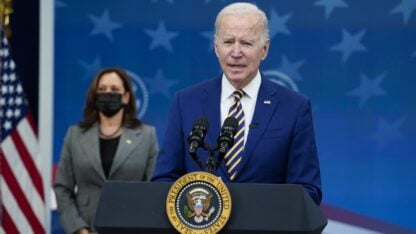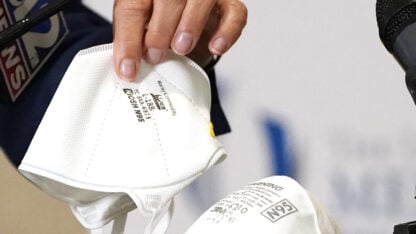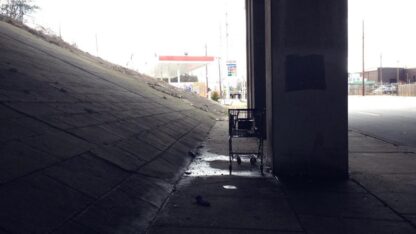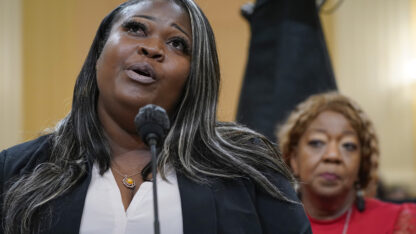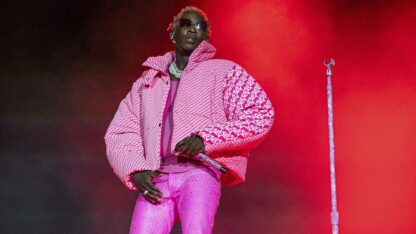The precision. The energy. The limitless swag.
Fans of Beyoncé are reliving the pinnacle performance of her career once again with Homecoming, the concert documentary released on Netflix last week. The film both documents the performance and sheds light on the eight months of work — four months of putting together the run of show and learning the choreography, followed by four months rehearsals — that led up to her headlining slot at Coachella in 2018.
In the two-hour film, extended sections of the performance are intercut with behind-the-scenes clips of Beyoncé conceptualizing the show alongside the 200-plus artists — dancers, musicians, creative directors, technical staff — who helped make it possible.
As momentous as the performance was in real time, and in the days that followed, its shadow has only lengthened in the year since. As the first black woman to headline Coachella — probably America’s most-visible music festival — Beyoncé set out to make a deliberate statement about black beauty, culture and fortitude. From the orchestral sampling of Southern greats like C-Murder and Juvenile to the incorporation of classic marching band fight songs, the detail woven into the performance, much of it native to the culture of historically black colleges and universities — HBCUs — was a celebration that now doubles, in the document of it, as an introduction to that culture’s traditions: the big football game, the drumline battles, the homecoming concert, the steppers, the dancing dolls.
To do so authentically, Beyoncé’s creative team enlisted the help of marching band members from across the country to kick up the flavor.
“I wanted a black orchestra,” Bey says in the film (and in an interlude on Homecoming: The Live Album). “I wanted the steppers. I needed different characters, I didn’t want us all doing the same thing. And the amount of swag is just limitless. Like, the things that these young people can do with their bodies and the music they can play. The drum rolls and the haircuts and the bodies… it’s just not right. It’s just so much damn swag.” Beyoncé commends the insurmountable passion and charisma of her band, calling the young performers “the heartbeat of the show.”
To find her black orchestra, Beyoncé and her team enlisted the services of DRUMLine Live, and sought out black musicians on an individual basis. Over the weeks and months of rehearsal leading up to the show, she trusted the instincts of her assembled band to incorporate their swag in ways that were most natural to their college experiences.
At NPR Music, the home of the Tiny Desk, we know that any good lead vocalist is only as good as their support. NPR Music spoke to members of Beyoncé’s commends the insurmountable passion and charisma of her band, calling the band, some of them Tiny Desk Concert alums, about their road to Beychella, the view from the bleachers and the two-fold legacy they’re now part of.
These interviews have been edited and condensed for clarity.
Ari O’Neal, guitarist, 25
University of Maryland
On getting the call
“It was on my birthday — December 11, 2017 — and I was flown out the very next morning at 6 o’clock and I had rehearsal that same day. I literally got off the plane, went to the hotel room, dropped my stuff off and the car was already waiting outside for us to go. I was looking at all these women that I had seen in her concerts before and I was like, ‘Oh my God. Do they know me? ‘Cause these are like legends right here. You sure you want me to do this?’ ”
On the family atmosphere of rehearsals
“That was my first time being away from home for an extended period of time and I felt so comfortable… I kinda miss it right now. It was a lot of long days of just working and crashing together. We all felt very, very included. We got to have a lot of input, [with] a lot of us going to college and HBCUs, so getting to see how this was formed, just the process, was amazing. It made the days not even feel long. I always left wanting to stay in rehearsal.”
On what working with Beyoncé taught her
“Before this, I have never been in a situation where everything was just so professional. Everyone was always on time. … To see just a high standard everyone had for each other, that’s the standard that I carry for my peers now and will carry for our peers from now on.”
On the legacy of the performance
“I knew it was going to be an amazing show, but I didn’t know that impact that it would have, only because I have not experienced what it’s like to be in an HBCU. But being a Delta [Editor’s note: Delta Sigma Theta Sorority, Inc. is a sisterhood of predominantly black, college-educated women and is part of the National Pan-Hellenic Council, an organization of nine historically African-American Greek lettered fraternities and sororities] and being in the Black Student Union at school, to see those elements made me so excited. And then, to see afterwards how many people could relate, I was thinking, ‘Man, I guess I should’ve expected that,’ because so many people relate to this culture. To see all the positive feedback made me feel so good. It really reminded me how deep we are out here.
“There’s a prayer that I will always say before I perform:
“God, give me the strength to hold around your heart the strength to hold us up allow us to feel blessed embody and make us a great show. Allow us to bless somebody in a way for them to walk away with something and then do my job and then go.”
“But now, looking back at it, everyone held her up. She held us up. And we really helped people walk away with something.”
Ty Onley, drummer, 31
Norfolk State University
On having creative input
“I can’t remember who came up with that name [The Bzzzz Drumline], but it was somebody in the group of our director, Larry Allen. It’s crazy because, obviously, Beyoncé, she got her Beyhive, and then drummers, we have a thing that we do called the buzz roll. So ‘buzz’ correlated to two things.
“Our percussion director, Larry Allen, was super cool, and he was open to our ideas. I’m from Richmond, the DMV. Go-go is our thing. So, we had a section toward the end with ‘Love On Top’ where we were doing like a go-go vibe, and he would call me over like, ‘Hey, man, what you think about this?’ We’d brainstorm and put some thoughts together, he’d let me play with patterns and add some vocals to it to make it more authentic. He was amazing at taking everybody’s suggestions on different parts. It was all pretty much a collaborative effort when it came down to it. Everybody had a chance to put some input in and you know, bring they swag to the table. It’s just a blessing to, you know, to even have that opportunity to say, ‘Well, this is how we play this back home and this is the type of textures and stuff that we add to it.’ ”
On adding his HBCU experience to the performance
“I went to Norfolk State University. I played snare drum my first year and then I played sextuplets my last three years. I played quints [5 drums] in the show. One thing about HBCU culture, band culture, it will tear you apart if you not authentic with it. If it doesn’t look right… man. ‘Cause it’s a real strong culture, and it’s a fine line between you killin’ it and people clowning you.”
Wayne Westley, trombonist, 29
Florida A&M University
On having creative input
“Once we saw the different dance moves and the whole thing, it was our job was to learn that and to add some of the different movements from our world into it.
“I remember one day, it was one of those kinds of rehearsals where we had a water break, so the band members, we’re attached to our instruments. Someone started playing ‘We Ready,’ which is like a standard fight song. And we all started chiming in and soon everybody was playing it and the dancers got up and started dancing to it, too. And Bey was talking to her creative team and when we started playing, she just looked up and was like, ‘I like that, I love that, Can we add it to the show?’ We did that maybe four weeks before the show. And in the film, you see it in the beginning.
On the hardest part of the learning the routine
“The performance itself was not hard, because by the time we got there it was just embedded in our system. I’ve been doing this since 5th grade, you know, so once you learn the show, it becomes part of you, it becomes second nature. The actual movements were pretty much easier than what we did on the field, so it just took repetition.
“The hard part was learning that much music. Bey, she has albums for days, it was over 40 songs and there’s no break. So, learning the cuts and hits with each song, that took time to get the muscle memory. And then Beyoncé, she always starts on her right, but in the band world, you start on the left side, rock to the left. So, with Beyoncé, we had to switch it up, everything right foot first, every time. That was a big adjustment.”
On the feeling onstage
“The first weekend, the anticipation was super high — we got there early and just waited all day to perform. That first walk over to the stage, the energy was through the roof, people screaming, smiling ear to ear to ear. And then onstage, even before the music, when it was all blacked out, you could hear us on stage, being loud obnoxious and crunk, when I tell you everyone was excited… It was wild! And then once you see the sea of people, that took energy to a whole ‘nother level.
“I was higher up on the bleachers, so I could see what I felt like was all the way back. My first experience seeing something that big, with that many people, was Barack Obama’s first inauguration [in 2009], that’s the last time I saw that many people in one place.”
On why this performance has lingered in the minds of the public
“I think it’s important because, like she said in the documentary, she always wanted to attend a HBCU. Growing up in Texas, seeing the tradition and not being able to be part of the tradition, I think she felt she had an obligation to show the world black people are beautiful, and that HBCUs are a unique factor to the education system.
“I think it opened the eyes to a lot of individuals who may have not known what HBCUs are or what they’re about and the culture they have. That’s a lot of knowledge that was put on to people. If we didn’t have them, when they first started, we wouldn’t be here because, you know, back in the day, those were the only colleges black people could attend because of segregation. It’s a once-in-a-lifetime experience that everyone should try to do if they can.
“I know it touched so many people, from Michelle Obama to someone across the world who might be inspired to go to a HBCU because of Beyoncé and the window she opened. This moved the culture forward, and it showed that black is still beautiful and we need to take our place and be present at times like these, even when that’s not an easy thing to do.”
Copyright 2019 NPR. To see more, visit https://www.npr.org.
9(MDAxODM0MDY4MDEyMTY4NDA3MzI3YjkzMw004))

9(MDAxODM0MDY4MDEyMTY4NDA3MzI3YjkzMw004))

